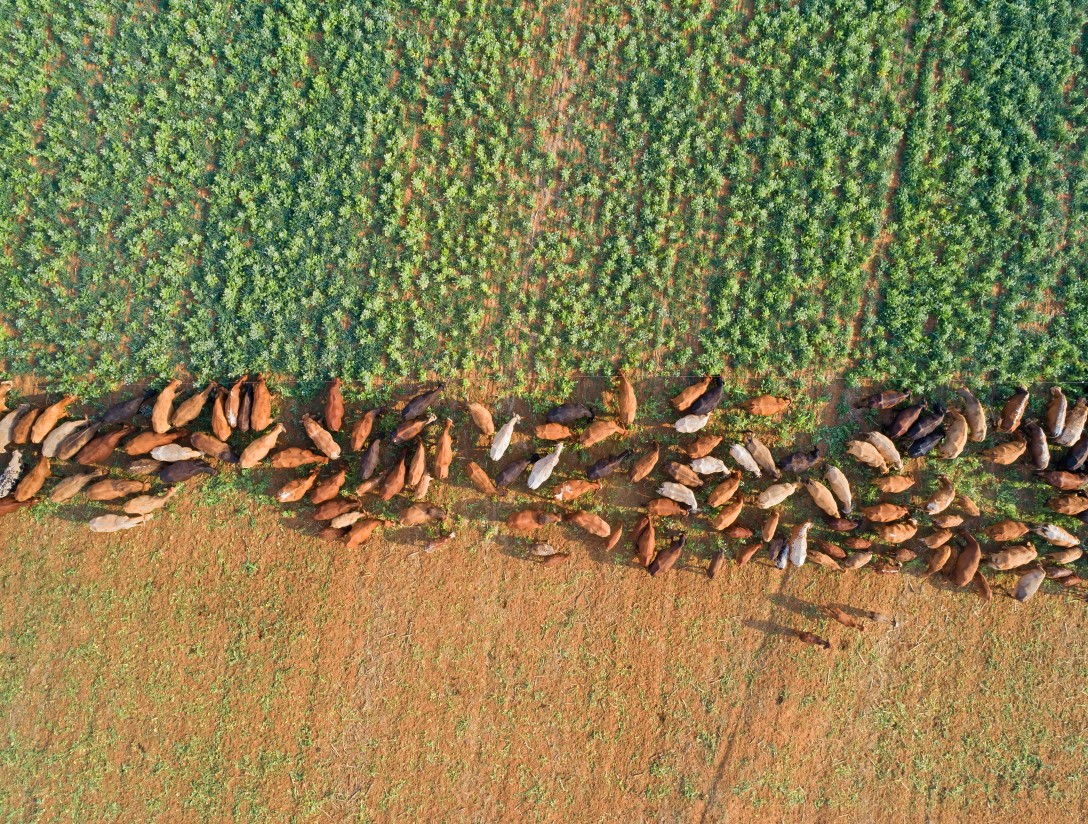We should be crying over spilled milk: Innovative food preservation technologies and smart business models urgently need to scale to meet challenges in Africa.


This article was originally published on Medium.

Approximately ⅓ of the food produced in the world (or $2.6 trillion dollars worth) is wasted annually and accounts for roughly 8% of greenhouse gas emissions. Meanwhile, food insecurity remains a global priority, with more than 800 million people affected by hunger as of 2021; according to the Food and Agriculture Organization of the United Nations, over 30% of the world population is affected by inadequate access to food– a number which is steadily rising, and being acutely felt in Africa at this moment.
If we hope to solve world hunger and global poverty while mitigating climate change, simply increasing the amount of food in the world isn’t enough– we must also consider how food can sustainably reach markets while improving livelihoods and decreasing waste. Sustainable food preservation technologies that are affordable and easy to implement can reduce food waste and increase food security, all while improving incomes. While the potential is obvious, there is a considerable amount of ingenuity required to overcome the unique food presentation challenges found in emerging markets. We’re working with companies like Inspira Farms and S4S Technologies who are showing what is possible- though they represent just the start of the solution space.
Barriers to Innovation
The agricultural sector in Africa has demonstrated marked growth. In fact, SSA has had a higher rate of growth since 2000 than any other region in the world– smallholder farmers make up more than 60% of the population and provide more than 70% of food supply. Yet approximately 37% of this food is wasted — mostly after harvest. Much of the food waste in SSA can be attributed to common impediments found across LMICs. For instance, many crops are produced seasonally and need to be transported long distances across undeveloped rural land most of the time. What produce doesn’t spoil endures a rough journey to informal, open-air markets without cold storage options. Farmers also are often not allowed into these markets, unaware of how their produce is priced or how much is lost to spoilage and, since African farmers produce less per acre, these losses are much more noticeable–both in product and pocket.
Indigenous solutions such as open-air sun drying, shaped by the dry, hot climate in Africa, is commonly used for grains, fruits, and vegetables. However, traditional solar drying can be time and labor intensive, often with ample opportunity for contamination and spoilage. Often overlooked, fermentation is also widespread in parts of Africa. In some regions, fermented foods are cultural staples, like garri and Hausa Koko in West Africa and chibuku in South Africa, but often require sophisticated processing plants to scale beyond household use. Commercial refrigeration is often unaffordable because of high up-front costs and, even if installed, if difficult to maintain due to intermittent or unreliable access to electricity.
New technologies exist which could address these losses, but require simultaneous business model innovation to scale. Successful ventures must address a multiplicity of barriers– like unreliable energy supply and limited access to finance for expensive up-front investments in cold chain infrastructure. Frustratingly, food preservation often has the greatest impact where it’s impact is least visible- field heat, if removed at the time a vegetable is picked, will slow biological activity and greatly extend shelf-life even if the rest of the cold chain is not intact. (For most produce, each hour delay at field conditions of 35°C will result in a loss in shelf-life of about 1 day.)
Fortunately, many exciting new technologies for food preservation can address these specific barriers without intensive labor input and with better implications for producers, consumers, and the planet. There are nearly endless ways to preserve food; dehydration, refrigeration, freezing, controlled atmosphere storage, modified atmosphere packaging, vacuum packaging, heat treatment, ultraviolet radiation, ionizing radiation and high hydrostatic pressure- just a name a few (Farkas, 1997).
However, each of these options require massively varying amounts of energy and capital to scale and maintain- key barriers in LMIC markets. A single gallon of milk requires about 100 watts of energy (over about three hours) to cool from ambient to refrigeration temperatures, but then also requires constant cooling from the origin to the consumer to maintain quality. The energy (and carbon) emissions related to the transport, storage, and retail display of that gallon of milk can be 100–10,000 times greater than the initial energy required to chill the milk. On the other hand, for about 5x the energy demand of refrigeration it is possible to instead heat treat that same gallon of milk allowing it to be shelf stable at room temperature for several months.
Innovation on the Ground
Innovative companies in Africa and India are creating solutions to invigorate supply chains and put these technologies into the market. Inspira Farms, for example, combines energy efficient, off-griddable cold rooms and packhouses with financing options and remote monitoring, a combination which improves harvest yields and supply chains while simplifying the adoption of on-site refrigeration for small-holder farmers in Africa. Cold rooms are made with lightweight panels and a steel framework– increasing the ease of on-site assembly, and can be installed out or indoors. Each panel is injected with high-density polyurethane, reducing energy loads, and interior surfaces are designed to not retain moisture which ensures export-grade hygienic processing and storage. Cold rooms include thermal storage systems and can offer hybrid solar options to ride through unreliable energy supply, thereby lessening reliance upon diesel-powered generators in the event of a power failure. InspiraFarms also provides an option to install units with space to store and process harvested produce. Because this technology is affordable, efficient, and adaptable, it simultaneously captures losses (particularly in tropical areas where produce loss can reach up to 50% without efficient cold storage) while simplifying the supply chain to improve access to high-value markets.
Another company working to combat food waste with creative solutions to food preservation is Clean Crop Technologies. Clean Crop uses High Voltage Atmospheric Cold Plasma (HVACP) technology to remove a wide range of harmful microbes and pathogens (like aflatoxins) during processing. Aflatoxins are some of the most significant contributors to grain loss in humid, hot areas prone to drought–like Sub-Saharan Africa. At least 30% of food is spoiled because of pathogens, pests, and toxins and up to 50% of total food loss in the world can be found in the global grain and nut trade. Clean Crop Technologies is working to significantly reduce these percentages while protecting the quality and nutritional value of harvests through their innovative cold plasma treatments.

This is done by combining air and electricity to produce an effective means of food preservation and their HVACP machines are made to easily fit into a production line and require a very low amount of energy to operate. Clean Crop Technologies products are capable of removing 99% of mold and pests while removing up to 83% of toxins without impacting the overall quality of the food, leaving no residue and maintaining the nutritional content after processing. Of course, varying nuts and grains require different processing needs, but plasma treatments are malleable and can adapt to the harvest, making this technology more accessible and applicable.
S4S Technologies, based in India, converts food losses to market-ready products using traditional drying, but with improved technology. Their solar conduction dryer increases the speed and quality of they drying process while protecting produce from pest. The end product is shelf stable and lightweight- simplifying logistics along the supply chain and improving the livelihoods of women entrepreneurs and farmers. Produce is first harvested at the farm-gate, providing an assured market to farmers and jobs to agri-entrepreneurs. S4S Technologies dryers are installed directly onto farms to dehydrate produce with no chemicals, and women agri-entrepreneurs process produce harvested goods immediately.

Because produce is dehydrated at the gate, this process cuts losses and the need for cold chain storage, therefore making food easier and more efficient to transport. And the dried goods don’t always stop there- processed produce can then undergo a secondary process by S4S Technologies where food is sorted, packaged, and distributed for use by customers who can rehydrate the product and use it immediately. S4S Technologies’s innovative business model coupled with energy efficient technology implements food preservation to cut losses while impacting livelihoods and climate change for the better in one simplified value chain.
What’s Next?
The next evolution in cold chain might not be cold at all. Increasingly, food scientists are working with treatments and coatings that help preserve food without the need for temperature change. California based Apeel Sciences closed a $250 million series E last year. They treat produce with a thin, edible layer that helps slow the rate that produce spoils by maintaining moisture and reducing oxidation. Chicago based Hazel Technologies has developed a small packet that rides along with produce during transport releasing vapors “to triple the shelf-life of produce by slowing the aging process and preventing fungus or decay”. With the potential of the African market, it may just be a matter of time before these technologies begin to appear on the continent. However, we at Factor[e] are impatient and would like to see more innovation and impact on the continent- that’s why our newly announced venture studio is currently seeking to partner with African ag innovators to get innovations like these to market faster. (Email venturestudio@factore.com if you either have an innovation in the food preservation space, or are curious about making a career pivot into the sector).
Preserving more food, sustainably increasing energy access, and improving income can be simultaneously accomplished by attending to the specific needs of smallholder farmers and finding the best products to match them, and companies like Clean Crop Technologies, InspiraFarms, and S4S Technologies are carving pathways to improve livelihoods, global agricultural and energy sectors, and our carbon footprint. Efforts to produce more food to combat world hunger and poverty will fail without business models that preserve and protect both farmers and the food they produce. Innovating in the right direction need not be complicated, even when barriers most often are. The opportunity to impact millions of lives by reducing food waste with interesting solutions in preservation technologies awaits–but we must take immediate creative action.
full article
Thank you! You can now enjoy the full article
Like what you see?
Sign up for our newsletter
Thanks for signing up. We can’t wait to keep in touch.


